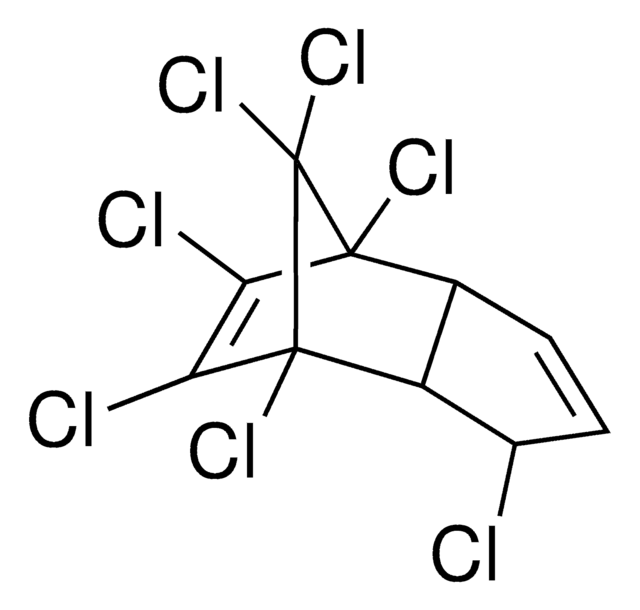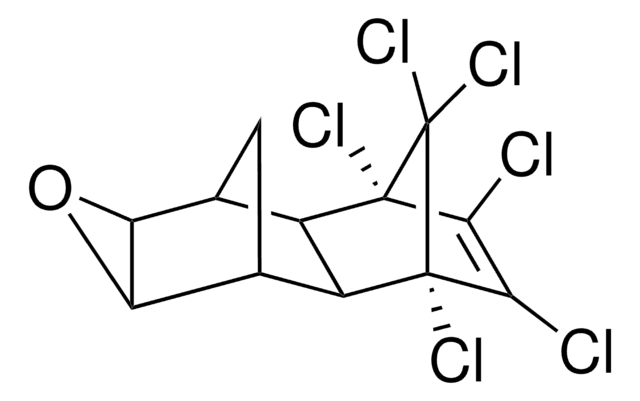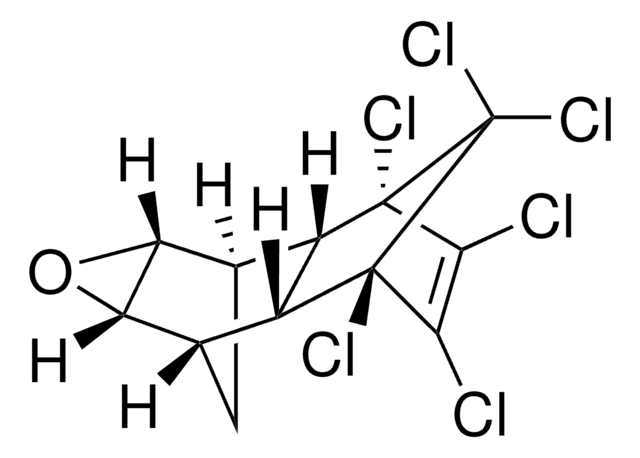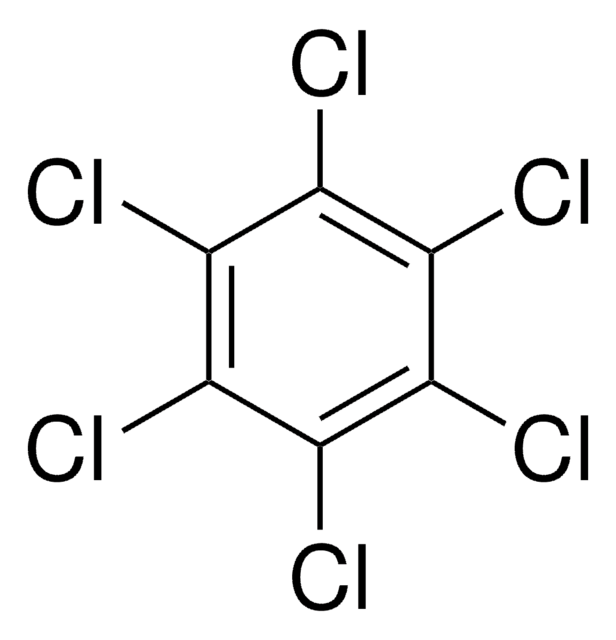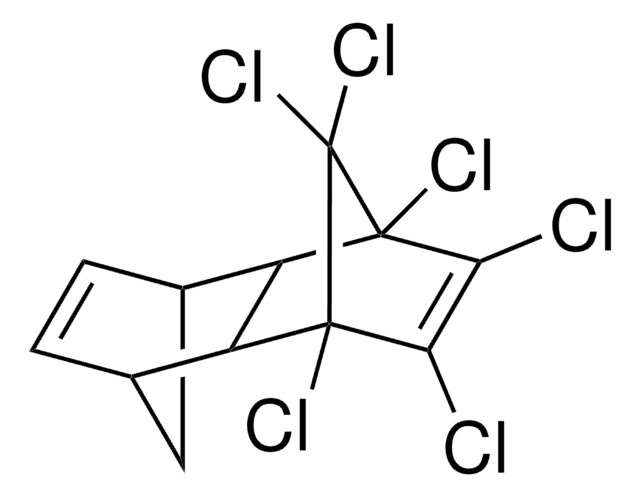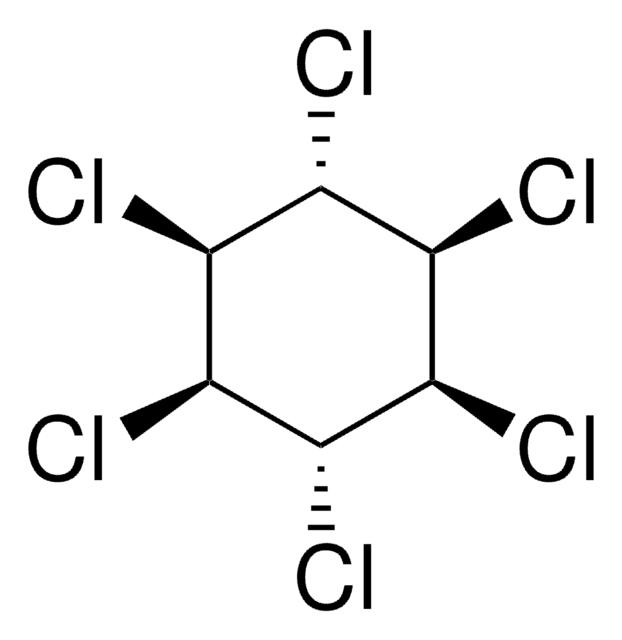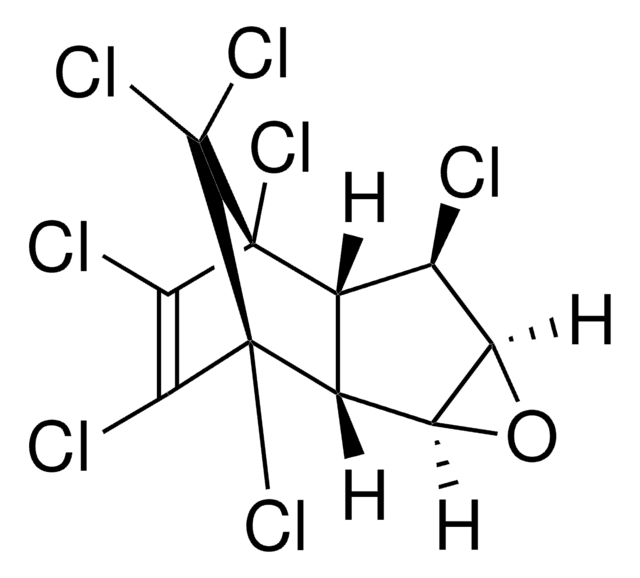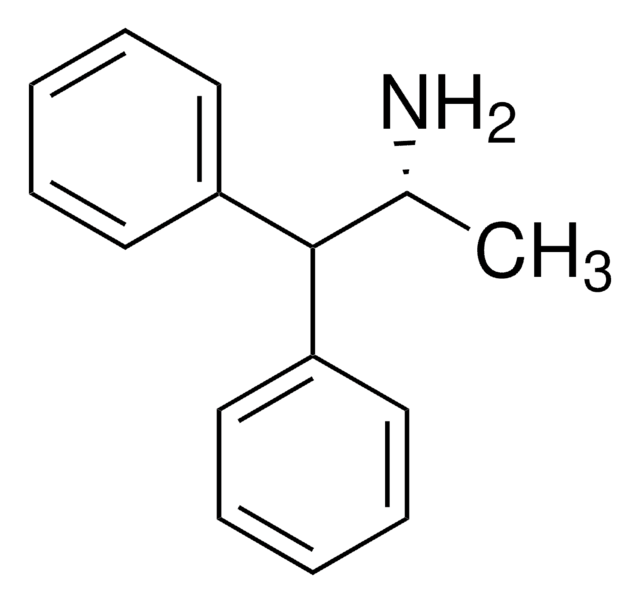31211
Heptachlor solution
100 μg/mL in methanol, PESTANAL®, analytical standard
About This Item
Recommended Products
grade
analytical standard
Quality Level
product line
PESTANAL®
shelf life
limited shelf life, expiry date on the label
concentration
100 μg/mL in methanol
technique(s)
HPLC: suitable
gas chromatography (GC): suitable
application(s)
cleaning products
cosmetics
environmental
food and beverages
personal care
format
single component solution
storage temp.
2-8°C
SMILES string
ClC1C=CC2C1[C@]3(Cl)C(Cl)=C(Cl)[C@@]2(Cl)C3(Cl)Cl
InChI
1S/C10H5Cl7/c11-4-2-1-3-5(4)9(15)7(13)6(12)8(3,14)10(9,16)17/h1-5H/t3?,4?,5?,8-,9+/m1/s1
InChI key
FRCCEHPWNOQAEU-ZFBAKZBRSA-N
Looking for similar products? Visit Product Comparison Guide
General description
Application
- In groundwater samples by solid phase microextraction (SPME) method with a polyacrylate fibre, prior to detection by gas chromatography mass spectrometry in electron impact ionisation mode (GC–EI-MS).
- In fruits and vegetables using solid phase extraction clean-up followed by gas chromatography and electron-capture detection (GC–ECD).
Legal Information
Not finding the right product?
Try our Product Selector Tool.
Signal Word
Danger
Hazard Statements
Precautionary Statements
Hazard Classifications
Acute Tox. 3 Dermal - Acute Tox. 3 Inhalation - Acute Tox. 3 Oral - Flam. Liq. 2 - STOT SE 1
Target Organs
Eyes,Central nervous system
Storage Class Code
3 - Flammable liquids
WGK
WGK 2
Flash Point(F)
51.8 °F - closed cup
Flash Point(C)
11 °C - closed cup
Personal Protective Equipment
Choose from one of the most recent versions:
Certificates of Analysis (COA)
Don't see the Right Version?
If you require a particular version, you can look up a specific certificate by the Lot or Batch number.
Already Own This Product?
Find documentation for the products that you have recently purchased in the Document Library.
Protocols
, analytical standard; Endosulfan sulfate; Endrin aldehyde; Endrin ketone; Heptachlor; γ-BHC, certified reference material, 1000 μg/mL in methanol; Decachlorobiphenyl; Methoxychlor
Our team of scientists has experience in all areas of research including Life Science, Material Science, Chemical Synthesis, Chromatography, Analytical and many others.
Contact Technical Service